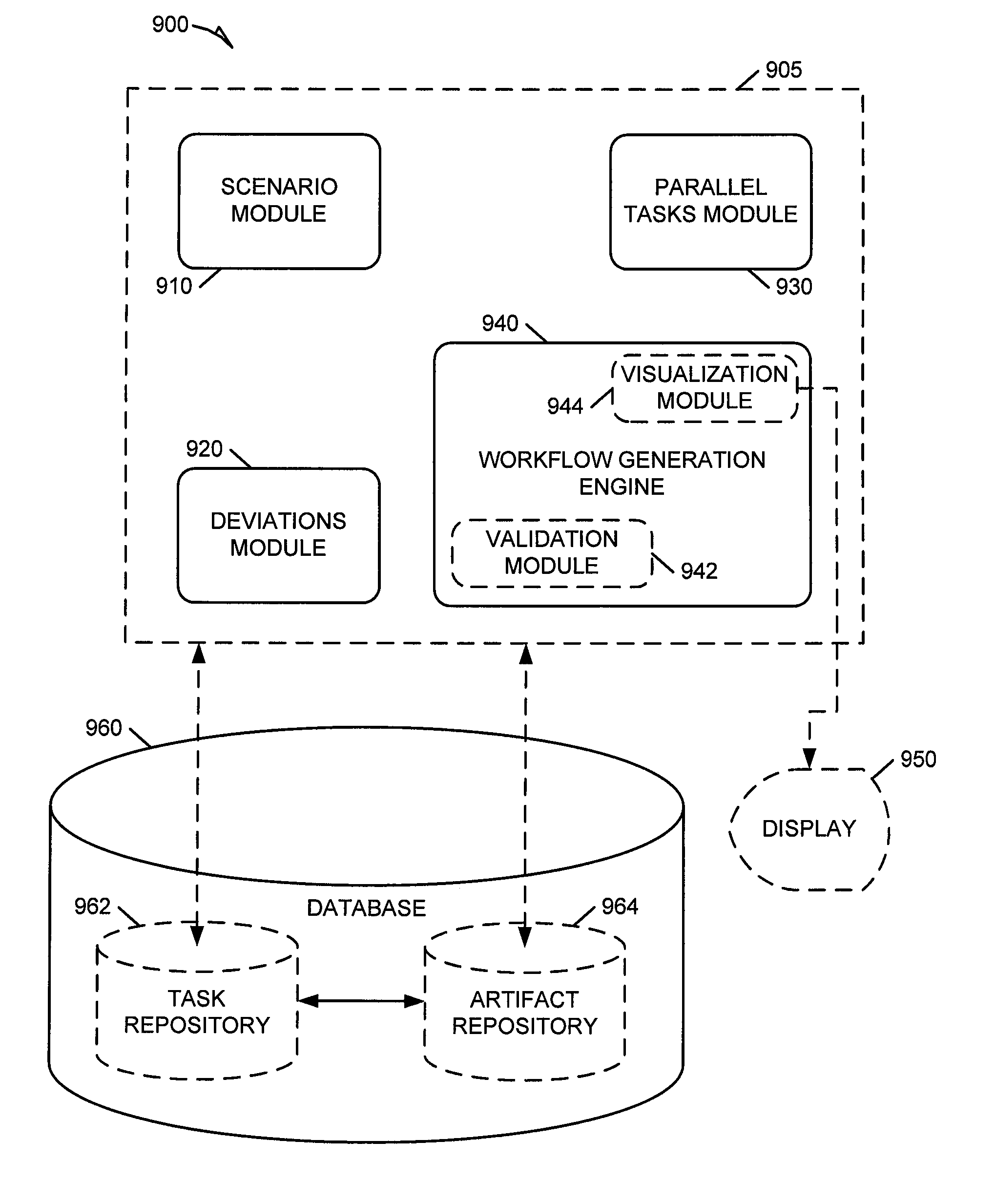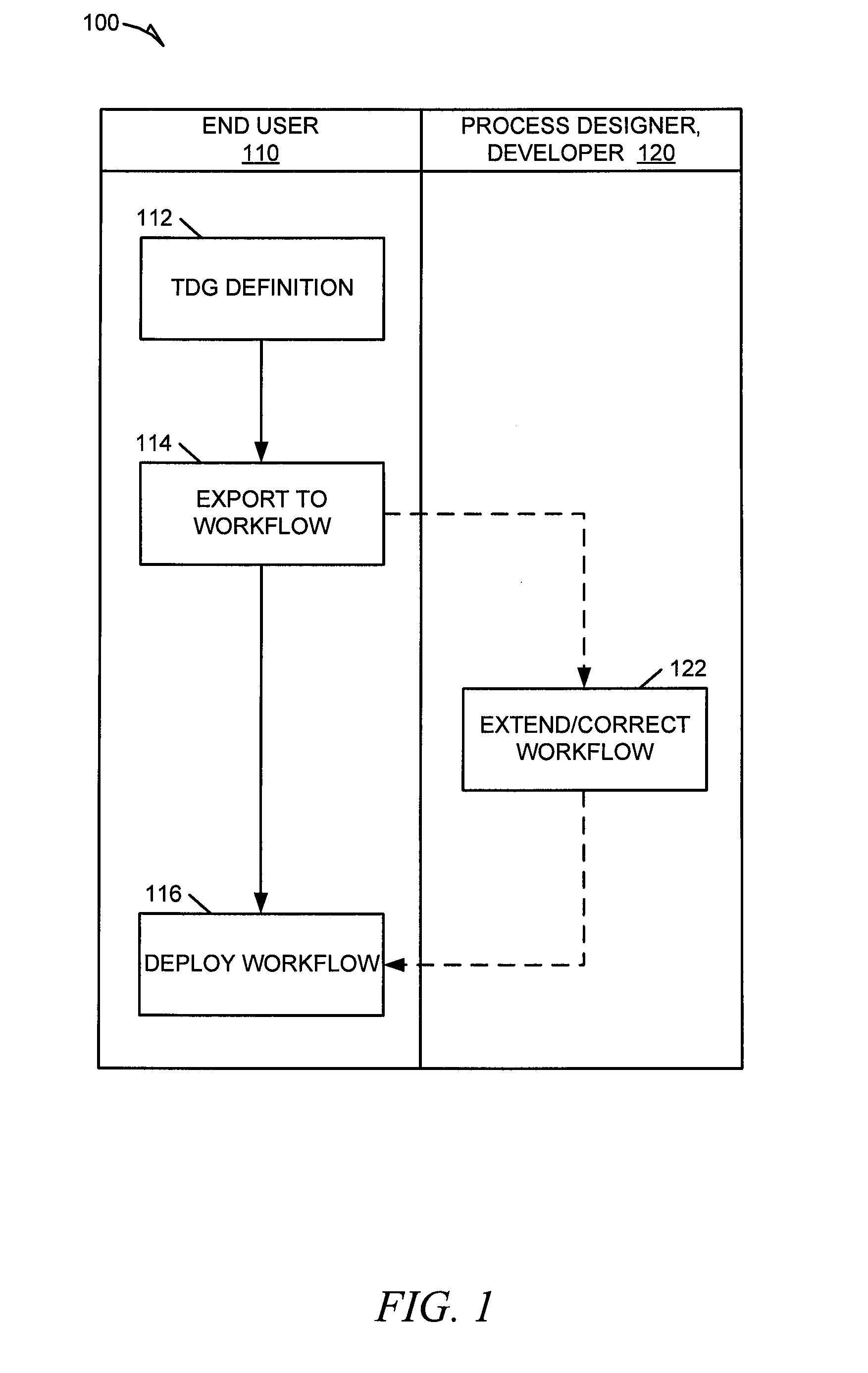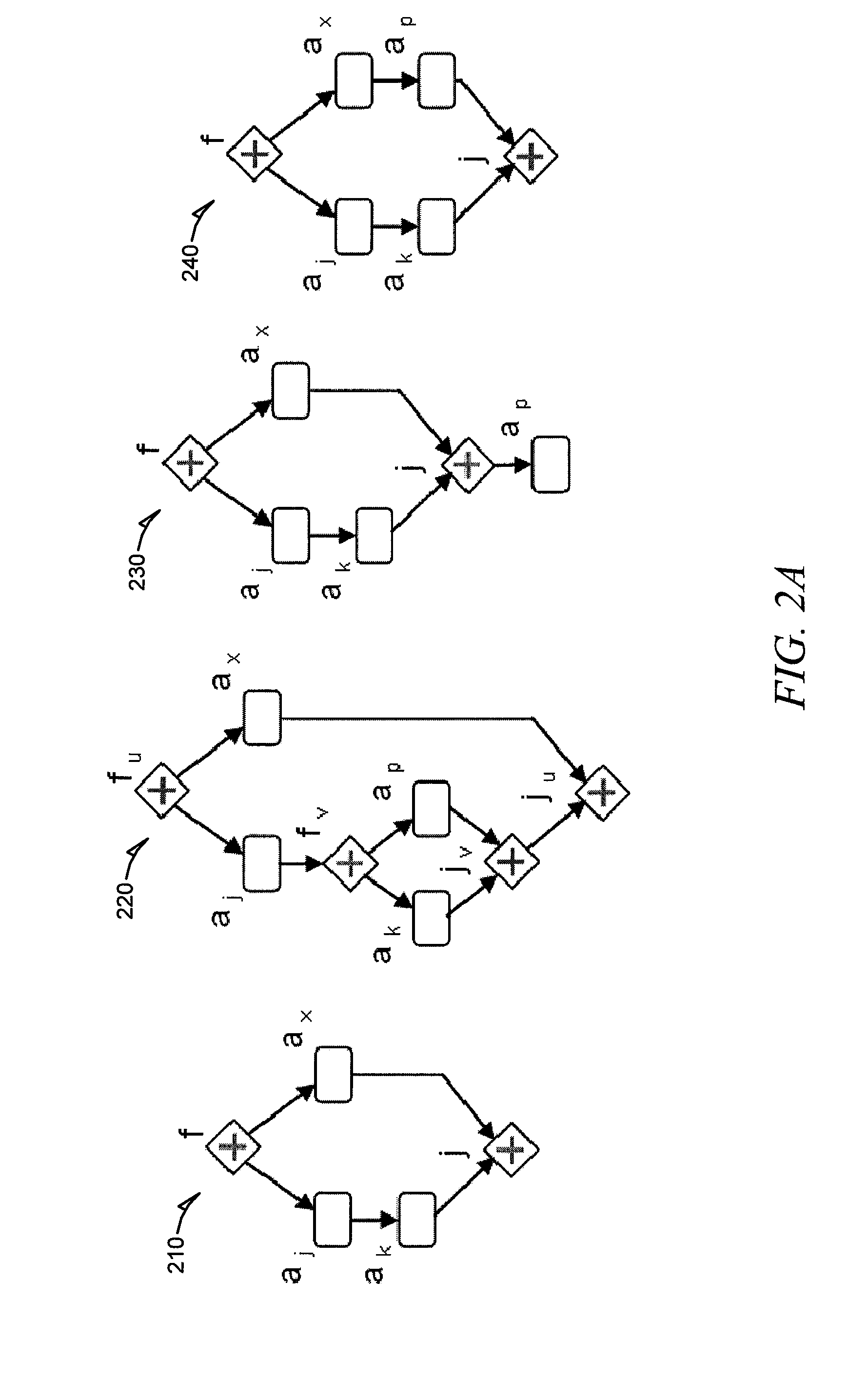Systems and methods for scenario-based process modeling
a process modeling and scenario-based technology, applied in the field of scenario-based process modeling, can solve the problems of not allowing end-user-driven process composition, affecting the implementation of bpm solutions in enterprises, and inacceptable for business users
- Summary
- Abstract
- Description
- Claims
- Application Information
AI Technical Summary
Problems solved by technology
Method used
Image
Examples
example consolidation
Options
[0053]FIG. 2D is a set of workflow graphs illustrating consolidation options, according to an example embodiment. The following example consolidations are in comparison to workflow graph 240, illustrated in FIG. 2A. One type of consolidation can be referred to as a merge. A merge is typically used to extend parallel relationships. In an example, three types of merge consolidations for extending parallel relationship can be used, merge head, merge tail, and merge tail to head. Merge head consolidation adds parallelism between Aj and Ak, as shown by workflow graph 215. Merge tail consolidation adds parallelism between Ax and Ap, as shown by workflow graph 225. Merge tail to head consolidation adds parallelism between Aj and Ap, as shown by example workflow graph 235.
[0054]Another type of consolidation is a split, which can be used to remove parallel relationships. As an alternative to the merge consolidations the following three types of split consolidations can be used to remo...
example implementation
[0061]The following example implementation uses a Collaborative Task Manager (CTM) prototype with a user interface component called a Process Definition Wizard (PDW).
Defining the Normal Scenario
[0062]FIG. 3 is a user interface screen 300 illustrating the definition of a normal scenario within the process definition wizard (PDW), according to an example embodiment. The user interface 300 includes a workflow definition bar 310, a scenario toolbar 320, a task toolbar 330, a tab pane 340, and a task list 350. The workflow definition bar 310 includes a workflow definition procedure with four steps. In this example, the workflow definition bar 310 includes a back button 312 and a next button 314 for moving back and forth between the steps. The user interface screen 300 illustrates the “Define normal scenario” step, shown highlighted. The scenario toolbar 320 displays the current scenario in the drop-down list 322. The drop-down list 322 can display a list that contains all generated scena...
PUM
 Login to View More
Login to View More Abstract
Description
Claims
Application Information
 Login to View More
Login to View More - R&D
- Intellectual Property
- Life Sciences
- Materials
- Tech Scout
- Unparalleled Data Quality
- Higher Quality Content
- 60% Fewer Hallucinations
Browse by: Latest US Patents, China's latest patents, Technical Efficacy Thesaurus, Application Domain, Technology Topic, Popular Technical Reports.
© 2025 PatSnap. All rights reserved.Legal|Privacy policy|Modern Slavery Act Transparency Statement|Sitemap|About US| Contact US: help@patsnap.com



